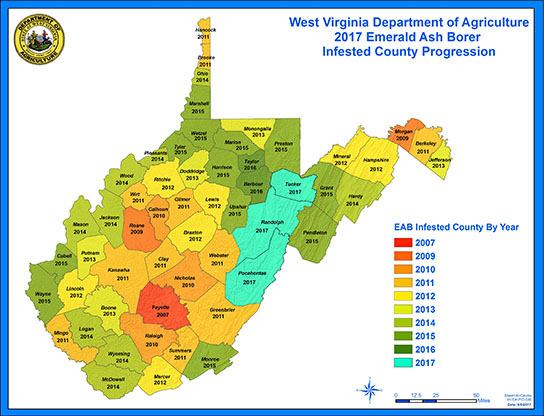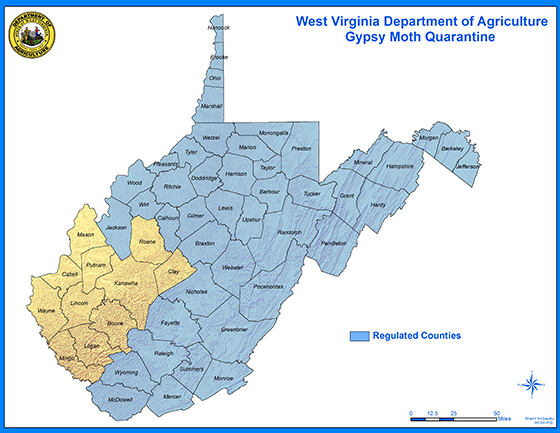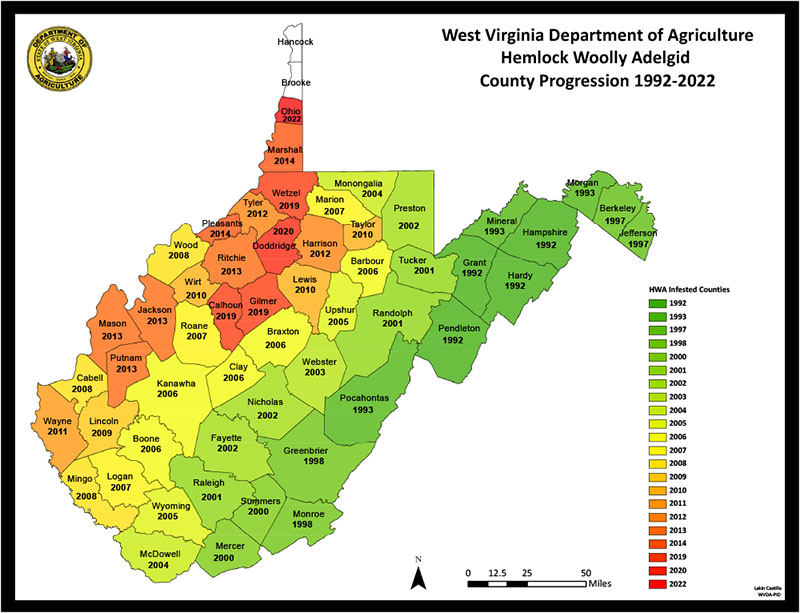Forest Health Highlights
Links
Forest Health Highlights
Thousand Cankers Pest Alert
Black Walnut Insect Disease
Emerald Ash Borer
Links
Pest Alert (Emerald Ash Borer)
Emerald Ash Borer Federal Quarantine Map
Lymantria dispar (Spongy Moth formally Gypsy Moth)
Links
Lymantria dispar (Spongy Moth formally Gypsy Moth) Program Areas
Lymantria dispar (Spongy Moth formally Gypsy Moth) Trapping Grid
WVDA Lymantria dispar (Spongy Moth formally Gypsy Moth) Report
USDA Lymantria dispar (Spongy Moth formally Gypsy Moth) Fact Sheet
Cooperative State County Landowner Lymantria dispar (Spongy Moth formally Gypsy Moth) Suppression Program



